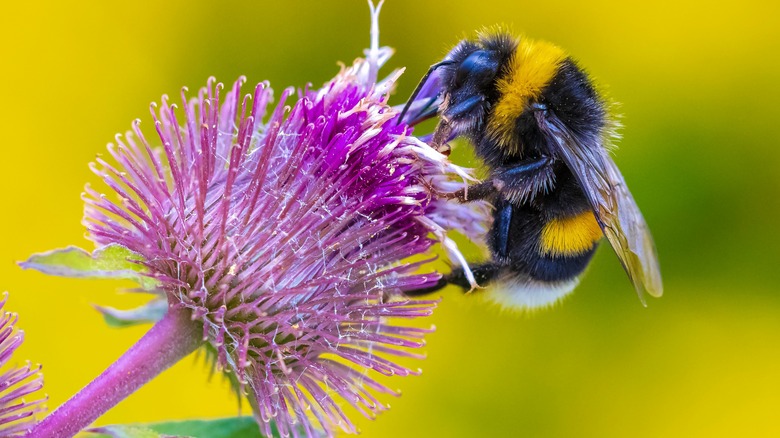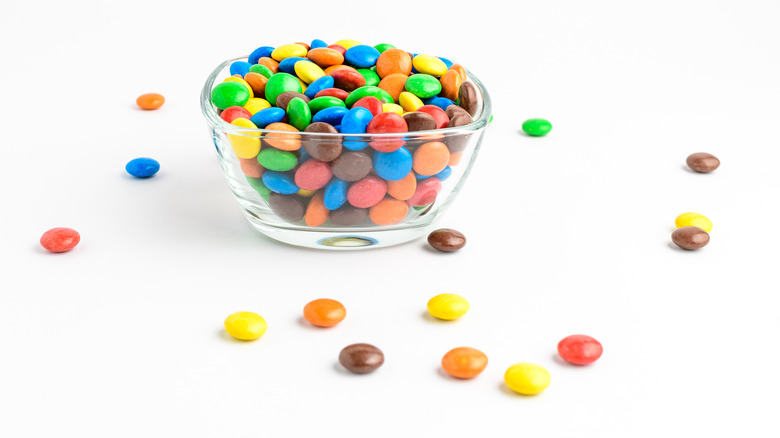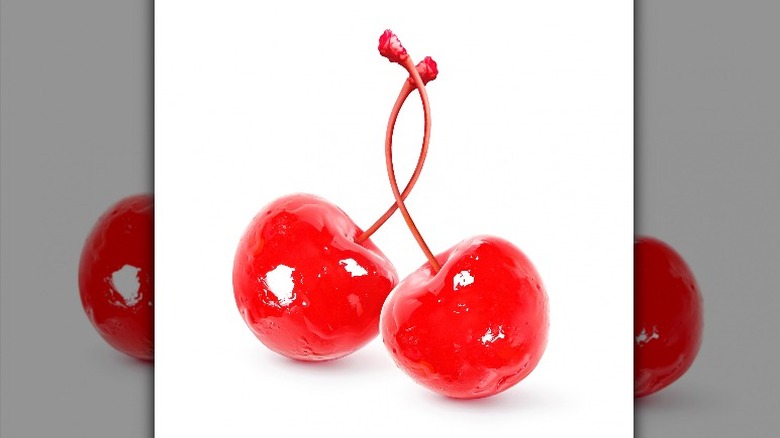The 'Sweet' Reason French Bees Once Made Blue Honey
Foods are meant to be a certain color and when they diverge from their traditional hue, humans don't always react well. Anyone who's ever read the Doctor Seuss classic, "Green Eggs and Ham," knows that an unusual pigment can prevent us from eating our favorite foods — even if the taste of them hasn't been altered at all. Seriously, would you eat green eggs?
Who remembers Heinz's EZ Squirt ketchup's foray into shades of the rainbow? Kids initially lapped up this oddly-colored condiment in shades of purple, green, and teal, leading to the sale of a whopping 25 million bottles (via Business Insider), but the novelty fizzled out and Heinz EZ Squirt Ketchup disappeared. Adults never caught on to the fad and kids soon abandoned it for traditional red.
It seems that the brain is conditioned to match certain colors with certain flavors. Konica Minolta discussed a study in the "Journal of Food Science" that demonstrated that when you mess with a food's expected color, you actually alter how it may taste to some. When subjects were presented with an orange-hued cherry drink, they tasted orange and when a cherry drink was prepared in a green shade, they tasted lime. Clearly, color and taste are inextricably linked. While a rose by any other name may still smell as sweet, does honey in any other color taste as sweet?
The French bees had a penchant for M&M's
Would you eat blue or green honey? In August of 2012, bees around the Alsace, France town of Ribeauville began producing honey in bizarre shades of these colors. After many puzzled looks and lots of head-scratching, it was revealed that a biogas facility that processes the brightly-hued sugar waste from M&M production had become a food source for the honeybees (per Time). Reuters reports that once the biogas plant was made aware of the problem, it immediately began storing waste in an enclosed space and washed out its existing holding containers.
While M&M juice may not sound all that unappealing to some, it's not the usual fare for bees. A spokesperson for the British Beekeepers' Association told the BBC that the bees may have turned to this source of sustenance due to the bitter winter and overly soggy summer.
Bees, after all, are masterful food finders. Despite their lack of noses, bees have a powerful sense of smell that relies on their antennae. Frank the Beeman explains that it's almost as if they can smell in 3D, like "standing in your kitchen with your eyes closed and 'seeing' it as well as you do with your eyes open." It comes as no surprise, then, that these bees were able to locate this ample source of sugary sweetness. And this is not the only time that bees have been attracted to syrupy factory by-products.
Another hive had been eating maraschino cherry waste
Would red honey appeal to your palate? In Brooklyn, New York, honeybees in the area began taking on a reddish color and creating blood-red honey. According to the Toronto Star, the number one suspect was a nearby Maraschino Cherries producer as the bees tested positive for Red Dye No. 40, the food coloring used to give these cherries their electric hue. You won't be able to slather your toast in blue, green, or red honey any time soon though (pause for a collective sigh of relief). These oddly-hued batches of honey were deemed "unfit for human consumption or unsellable" (via Slate).
While for some these incidents are nothing more than interesting stories that highlight the shady side of honey, the Vice President of the Maryland State Beekeepers Association warns these tales are, in fact, cause for great concern. She told Slate, "When bees go to non-floral sources, it is a sign that the environment is short of resources." And, the honeybee's search for food can prove disastrous, particularly if it heads for something sweet-but-deadly like antifreeze.
While the answer to our question, "Does honey in any other color taste as sweet?" will remain a mystery for now — one thing is clear. You are what you eat. Especially if you're a bee.


